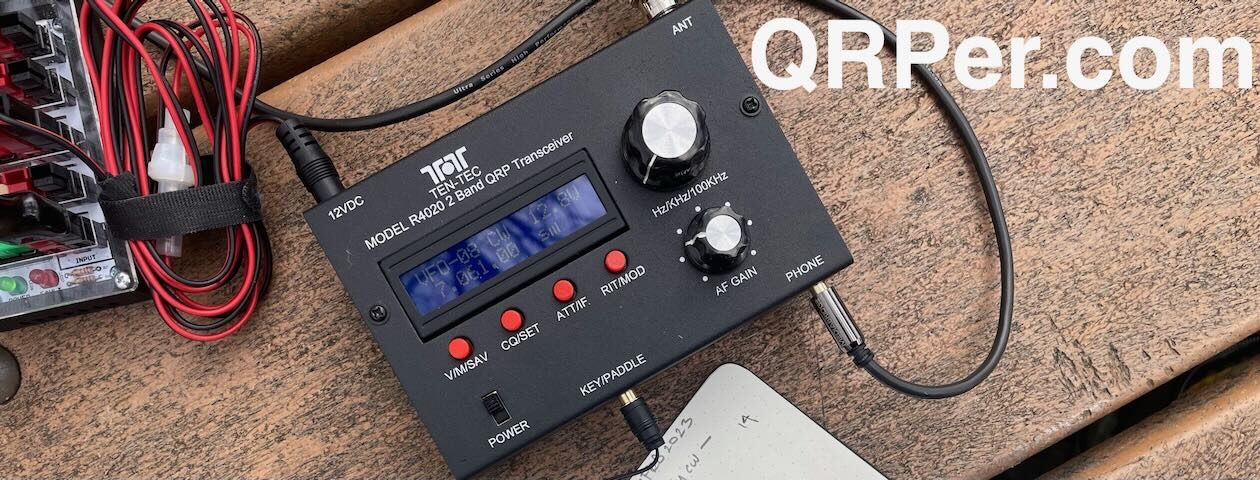By request, I’ve just posted another transceiver comparison video. This time, we take a look at the lab599 Discovery TX-500 and Icom IC-705 to determine which radio might better suit your needs.
As I mention in the video, I see these portable QRP radios as being in two different classes:
- the TX-500 for operators who want the most rugged, efficient, and weather-resistant general coverage transceiver currently on the market and
- the IC-705 for operators who want the most feature-packed high-performance portable transceiver on the market
Both radios are excellent options for hams who, like me, prefer playing radio outdoors.
Video
Click here to watch on YouTube.
What did I miss?
As I mentioned in the video, I knew I’d forget some important points while making the live recording. Here are some extra notes I wish I would have included:
SSB operation: Both radios have excellent features for the SSB operator including EQ settings for both transmit and receive which is a major plus for a QRP radio. I wouldn’t make a purchase decision based on SSB operation–both are excellent.
CW operation: CW operators will be pleased with both rigs. It’s important to note, though, that the TX-500 doesn’t have full break-in QSK like the IC-705. The TX-500 has at minimum a 100ms recovery time after keying a character. That’s a quick recovery, but not fast enough so that an operator can hear between characters formed; especially at high speeds. The IC-705 has full break-in QSK and it sounds great. Note that both the TX-500 and IC-705 use relays, not pin diode switching, so you can hear relays clicking inside the radio, but both are pretty quiet.
Protecting the IC-705: There are a number of IC-705 3rd party cages appearing on the market. These can be used to help protect the IC-705 in the field. Numerous readers and YouTube channel viewers have recommended the IC-705 Carry Cage by Peovi. From what I’ve seen, it looks to be the best of the bunch, but it doesn’t do a lot to protect the lower back portion of the radio–the part of the chassis that meets a surface. I feel like it’s not quite what I’d want, thus hard to justify $135 for it. Other aluminum and 3D printed cages seem to add too much bulk to the radio or obstruct some of the most common connection points on the sides (antenna, key, ATU control cable, speaker/mic, etc.).
TX-500 connectors and cables: The TX-500 uses GX12 mm connectors that are widely used in aviation, commercial and military applications. They’re easy to find online, but the price per each with shipping is typically around $7.00-8.00 US. You get a better deal if you buy in bulk, but often bulk packages of 5 or more are of the same pin count/configuration. W2ENY has posted a number of accessory cables, spare connectors and even a military-style handset on his eBay store and website. The Icom IC-705 uses more standard 1/8″ and smaller two and three conductor plugs.
Receiver Performance: Based on Rob Sherwood’s receiver test data table, the IC-705 has a performance edge over the TX-500. In the field, this difference is not noticeable. Indeed, both radios have very respectable numbers. If I had to choose one radio over the other if operating in a CW contest, for example, I’d give slight preference to the IC-705. I’ve used the TX-500 during a CW contest before, however, and found it did a brilliant job blocking tightly-spaced signals–click here to watch the short video.
Warranties: Both the Icom IC-705 and TX-500 come with a one year factory warranty. Click here for lab599 warranty service contacts and centers. Click here for Icom.
Feel free to comment if you have other specific points I might have forgotten.
Resources and links
Icom IC-705:
- Icom Product Page
- My review of the IC-705 on the SWLing Post
- OH8STN operating digi modes on the IC-705 without wires/cables
- Playlist of my videos that feature the IC-705
lab599 Discovery TX-500:
- TX-500 Product Page
- My review of the TX-500 on the SWLing Post
- Playlist of my videos that feature the TX-500
- lab599 distributors
- lab599 support and servicing
- diy599 matching RF amplifier and tuner
Feel free to comment and please let me know if there are other transceiver comparisons you’d like to see!








